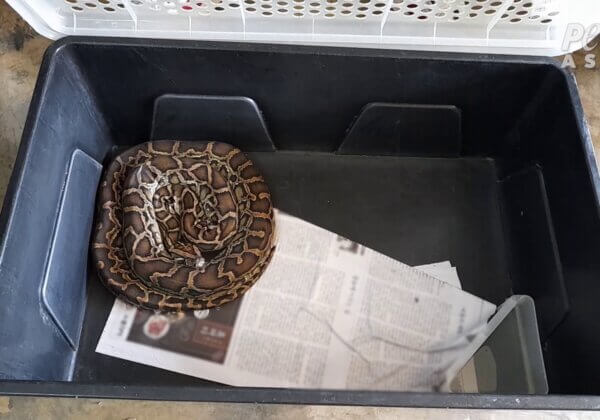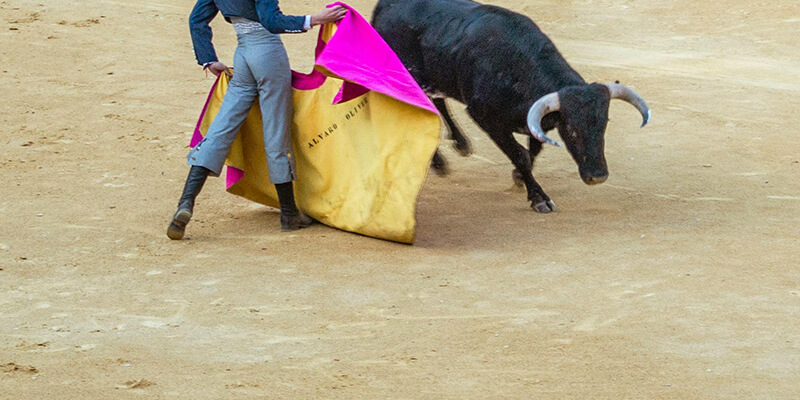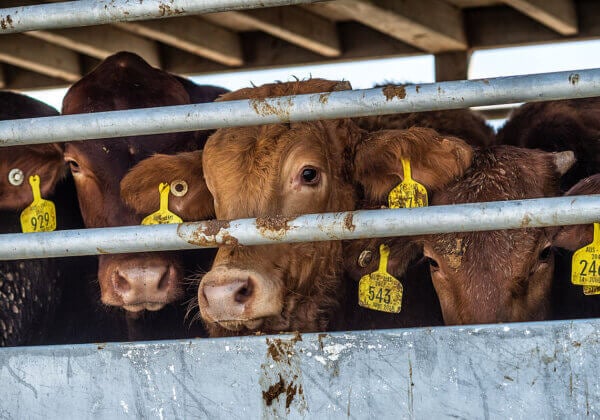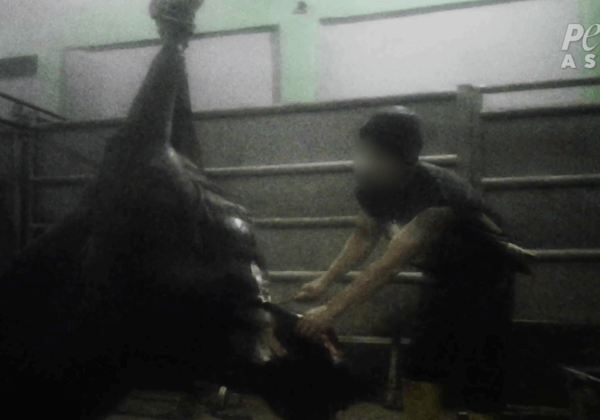PETA Stages Leather Protest at Sydney Fashion Week
As Australian Fashion Week began, a group of PETA supporters poured buckets of black “toxic slime” – representing the harmful waste generated by the leather industry – over their heads outside the event.
The messages on the buckets read, “Leather Is a Dirty Business” and “Dump Leather”.
 Etienne Ortrovent
Etienne Ortrovent
Leather Is an Environmental Disaster
The leather industry is poisoning the world. The 2017 “Pulse of the Fashion Industry” report confirmed that because of the massive amounts of manure and slaughter waste, intensive water use, deforestation, and greenhouse-gas emissions involved in its production, leather is one of the most environmentally damaging materials around.
Raising the animals whose skin eventually is used for leather requires vast quantities of water and wide tracts of pastureland, which must be cleared of trees. Farming cows for beef and leather products is responsible for 80% of the deforestation of the Amazon, while here in Australia, cattle and sheep pastures are responsible for 85% of land clearing.
Trees and vegetation that are able to absorb carbon dioxide (CO2) are replaced with cows, who produce massive amounts of methane – a greenhouse gas over 30 times more potent than CO2. The Food and Agriculture Organization of the United Nations estimates that 14.5% of anthropogenic greenhouse-gas emissions come from farmed animals and that the animals responsible for the most output are cows.
In addition to gas, cows also generate a lot of solid waste, as each animal produces between 21 and 55 kilograms of faeces daily. Waste runoff can enter waterways and cause nutrient build-up and algal blooms and make freshwater undrinkable. In the case of the Great Barrier Reef, sediment runoff from cattle stations reduces the amount of sunlight that reaches sea grasses and corals, slowing their growth.
Toxic Tanneries
Although leather producers tout their products as being “biodegradable” and “eco-friendly”, the process of tanning actually stops the leather from degrading. Untreated animal skin in your closet would just rot.
In fact, animal skin is turned into finished leather using a variety of dangerous substances, including formaldehyde, coal-tar derivatives, mineral salts, and various oils, dyes, and finishes, some of which are cyanide-based.
In Bangladesh, which exports leather goods globally, chemical exposure and equipment accidents pose such a great hazard that workers (many of them children) aren’t expected to live beyond age 50. The US Centers for Disease Control and Prevention found that the incidence of leukaemia among residents in an area surrounding a tannery in the state of Kentucky was five times the national average. Arsenic, a common tannery chemical, has long been associated with lung cancer in workers who are exposed to it on a regular basis. Several studies have established links between sinus and lung cancer and the chromium used in tanning. Studies of tannery workers in Italy and Sweden found cancer risks “between 20% and 50% above [those] expected”.
Because tanning is such a dangerous process, tanneries in wealthy countries are shutting down and moving their operations elsewhere – jeopardising the health of people in other parts of the world so that consumers in the West can continue to wear leather shoes and jackets.

Buying Leather Funds Slaughter
The leather industry subjects animals to horrific cruelty. The majority of leather is produced using the hides of cows farmed for their flesh and those used for dairy who are no longer producing enough milk to be profitable. They spend the last months of their lives confined to stinking feedlots, and some are exported overseas while still alive.
But it’s hard to be sure whose skin you’re really in.
Cows aren’t the only animals killed for the leather trade – sheep, horses, goats, pigs, kangaroos, and even cats and dogs are also victims of the industry. An estimated 2 million cats and dogs are killed in China each year for their skins.

Give Leather the ‘Boot’
A cow’s skin is meant for nobody but the gentle animal who was born in it.
Sustainable vegan leather made from apples, cork, mushrooms, paper, tea, and other materials mimics the properties of animal-derived leather – without any of the cruelty or environmental destruction.
You can protect animals and the planet by giving cruelly produced, toxic leather the boot and opting for vegan fashion instead. Check out the wide range of “PETA-Approved Vegan” brands!






